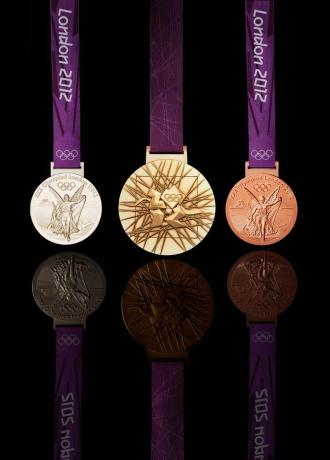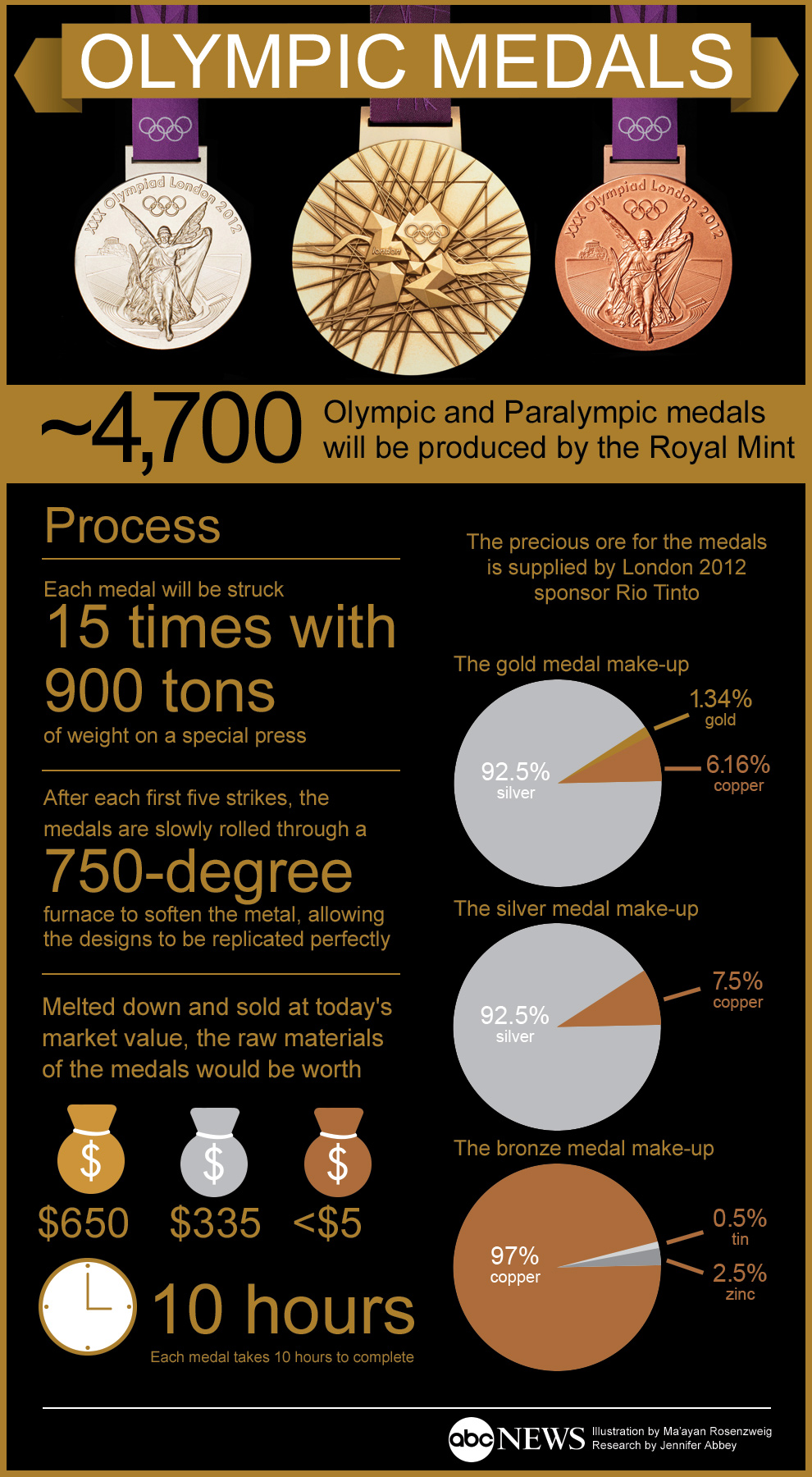 By Anne Marie Helmenstine, Ph.D., About.com Guide
By Anne Marie Helmenstine, Ph.D., About.com Guide
What do you think Olympic medals are made of? Are the gold medals really gold? They used to be solid gold, but now Olympic gold medals are made from something else. Here’s a look at the metal composition of Olympic medals and how the medals have changed over time.
- Gold and silver medals are 92.5% silver.
- Gold medals must be plated with at least 6 grams of gold.
- All Olympic medals must be at least 3 mm thick and at least 60 mm in diameter.
 Bronze medals are bronze, an alloy of copper and usually tin. It’s worth noting that gold, silver, and bronze medals have not always been awarded. At the 1896 Olympic Games, the winners were awarded silver medals, while the runners-up got bronze medals.
Bronze medals are bronze, an alloy of copper and usually tin. It’s worth noting that gold, silver, and bronze medals have not always been awarded. At the 1896 Olympic Games, the winners were awarded silver medals, while the runners-up got bronze medals.
The winners at the 1900 Olympics received trophies or cups instead of medals. The custom of awarding gold, silver, and bronze medals started at the 1904 Olympics. After the 1912 Olympics the gold medals have been gilded silver rather than real gold.
Although the Olympic gold medal is more silver than gold, there are gold medals that are really gold, such as the Congressional Gold Medal and Nobel Prize Medal. Before 1980 the Nobel Prize medal was made from 23 carat gold. Newer Nobel Prize medals are 18 carat green gold plated with 24 carat gold.
Open this image in a new browser window to see the large size.
Source: http://chemistry.about.com/od/metalsalloys/f/what_are_olympic_medals_made_of.htm






























